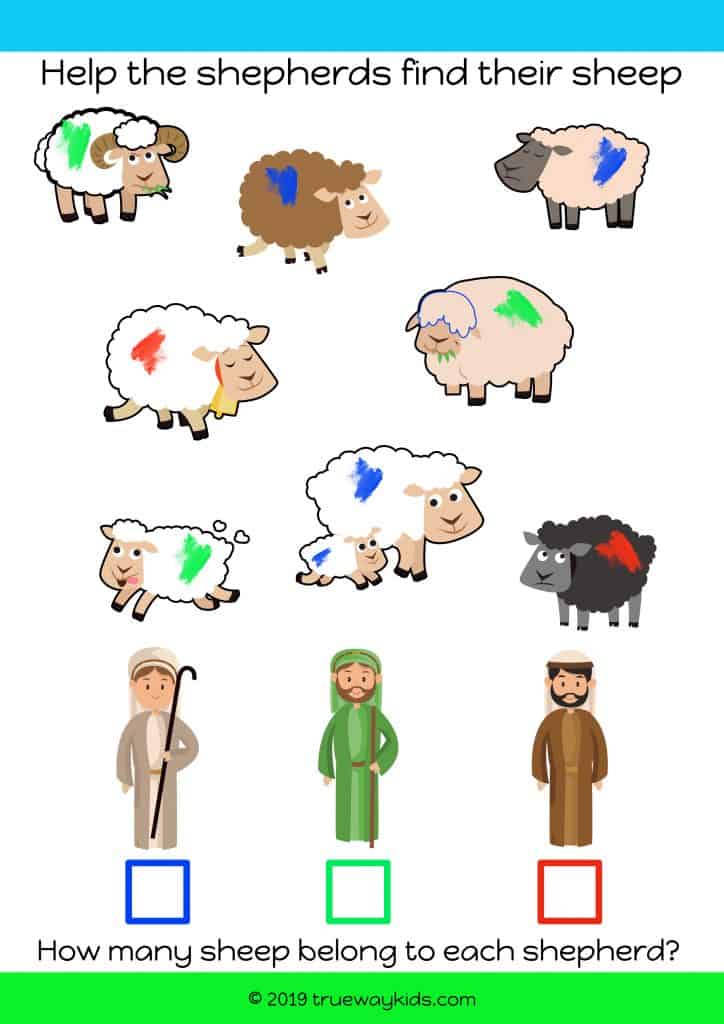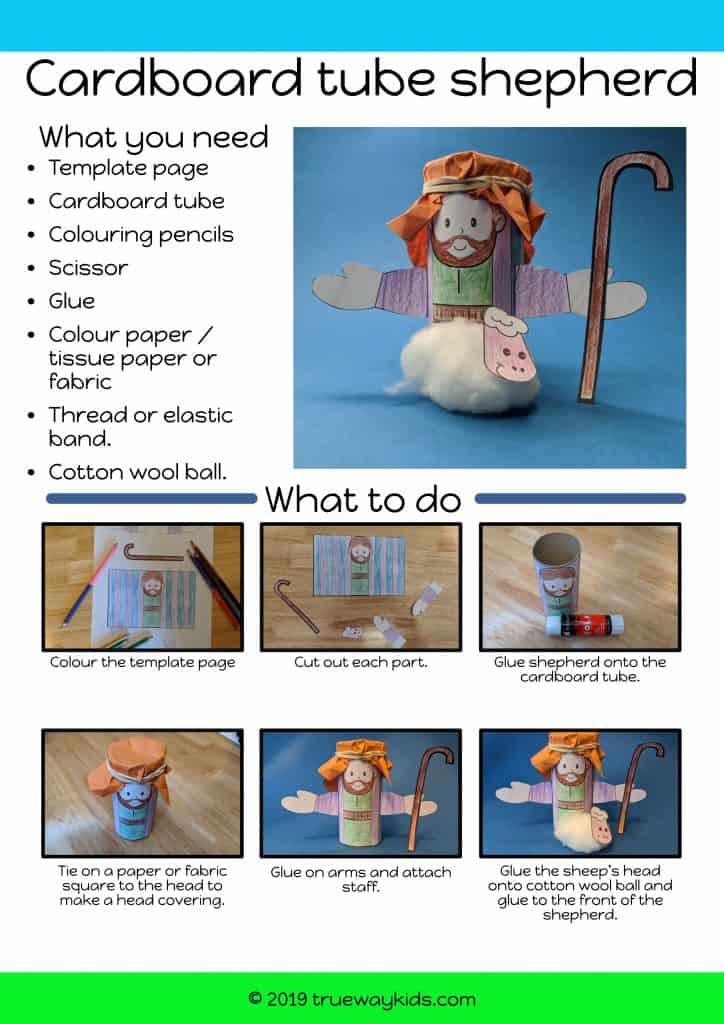This week’s lesson is the fourth in the Christmas lesson series. We will look at the shepherds who were the first to visit baby Jesus. (If you missed any of the past Christmas lessons click here).
Some of the key points we will study are:
- They were not important people in society, but they were important to God.
- They told everyone about Jesus. We should tell everyone, too.
- They brought what they had to Jesus.
- Jesus is a great shepherd.

The Shepherds – Lesson Guide
There are some helpful animated videos and song ideas included in a youtube playlist to go along with this lesson.
Ask the child if they remember what we studied in the previous weeks. Remind them we learned about the birth of Jesus. Ask them if they remember where he was born. Point out that a stable would not be a fun place to stay.
Talk about what a shepherd does. Explain that their job was to care for sheep, and they would spend their time in fields to protect, watch, and care for their flocks.
Ask the child who they think is an important member of society and who is an “unimportant” member of society. Remind the child that all people are important to God. Point out that while we look on the outside, God looks on the heart. Everyone needs a Savior. Whether someone works in an office or a barn or outer space, they are all the same. The shepherds at this period in history were looked down on by all of society, but God still chose them to be the first to hear of Jesus’ birth.
Write down on some note cards what the shepherds did. They were afraid. They listened. They went. They hurried. They saw. They spread the news. They glorified God. Mix up the notecards, and then ask your child to help you put them in the correct order. Point out that the shepherds started out afraid, but they ended by telling others the good news and glorifying God.
Ask the child what they would do if they heard some very good news. The most important news they had ever heard. Think about ways that you would tell others the good news. Point out that the shepherds told everyone, and we should tell everyone the good news of the Gospel, too. Remind the child that other people might have been more educated, more respected, smelled better, etc., but God chose the shepherds. They, in turn, offered everything to God. God can use anyone.
Read Psalm 23 together. Point out that Jesus is the Great Shepherd. Remind the child that He loves and cares for His people. Make a list of ways that you love and care for your child. Point out ways that Jesus is the same (He provides food, rain, etc.) and different (He provided the way of salvation, eternal life, etc.)
Explain that a shepherd will always care for his sheep. When one is lost, he will find it. Either have the child leave the room, or before you begin the lesson, hide sheep around the room. You may choose to make the sheep using clothespins attached to a piece of cardboard and wrapped with quilt batting and yarn. You may also choose to use cutout pictures of sheep or toys of some kind to represent the sheep (if you use toys, try to create the look of sheep in some way). Call the child back and tell them that his “sheep” are lost. Create a safe “pen” with a towel or blocks. Tell the child that to keep his sheep safe, he needs to put all of them in the pen. Help your child count as he collects the sheep and secures them. Although most of the sheep can be relatively easy to find, make sure at least one is very hard. Use this as an opportunity to explain that Jesus will always look for all His lost sheep (Read Luke 15:3-7).
Point out that the shepherd will celebrate when all his sheep are safe. When the child finds the last lost sheep (with or without hints), celebrate. You may tie a special ribbon around the sheep. Eat a special treat. Point out that God and all His angels rejoice when a lost person trusts in Jesus.
For the fourth week of the nativity setup, add the shepherds and sheep. Point out that they have come to worship the newborn Jesus.
Pray and thank Jesus that He came to find lost people. Ask Him to help you trust in Him and always tell others the good news.
Free Printable Bible Story


Games and Activities

Gather the Sheep
Hide some cotton wool balls around a room. If you have some extra time, you could draw some faces to glue onto them first.
Tell the children how many sheep there are and on go they must find all the sheep. Take it in turns to hide and seek. See who can find all the sheep the fastest.
Enjoy a Candy Cane
Sit down with your child and allow them to have a candy cane as a Christmas Treat. If you prefer not to give them candy, you can simply show a photo of a candy cane while enjoying an alternative snack.Speak about what the Candy Cane represents. 1) The Shepherds staff 2) J for Jesus 3) Red for Jesus’ blood 4) White for Jesus making us clean, 5) strips – by Jesus’ strips we are healed.


Act out the story
Use a tea towel to dress your child(ren) as a shepherd. Sit in a lowly light room. When the angels appear, turn on the lights, so everything goes bright. Use your imagination to make it as interactive as possible; look for resources you have around your home or church.
You can use some of the coloring pages included in these Christmas lessons to hold up for the different characters.
Worksheets




Christmas Coloring pages – The Shepherds







Cardboard Tube Shepherd Craft

What you need:
- Template page
- Cardboard tube
- Colouring pencils
- Scissor
- Glue
- Color paper / tissue paper or
fabric - Thread or elastic band.
- Cotton wool ball.
What to do:
- Colour the template page.
- Cut out each part.
- Glue shepherd onto the cardboard
tube. - Tie on a paper or fabric square
to the head to make a head covering. - Glue on arms and attach staff.
- Glue the sheep’s head onto
cotton wool ball and glue to the front of the shepherd.
Download the lesson







